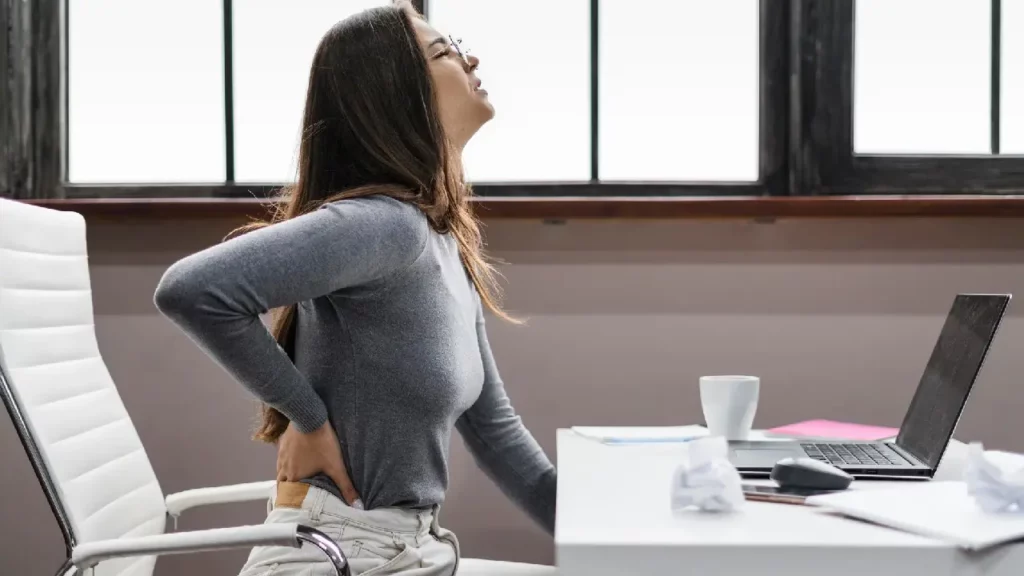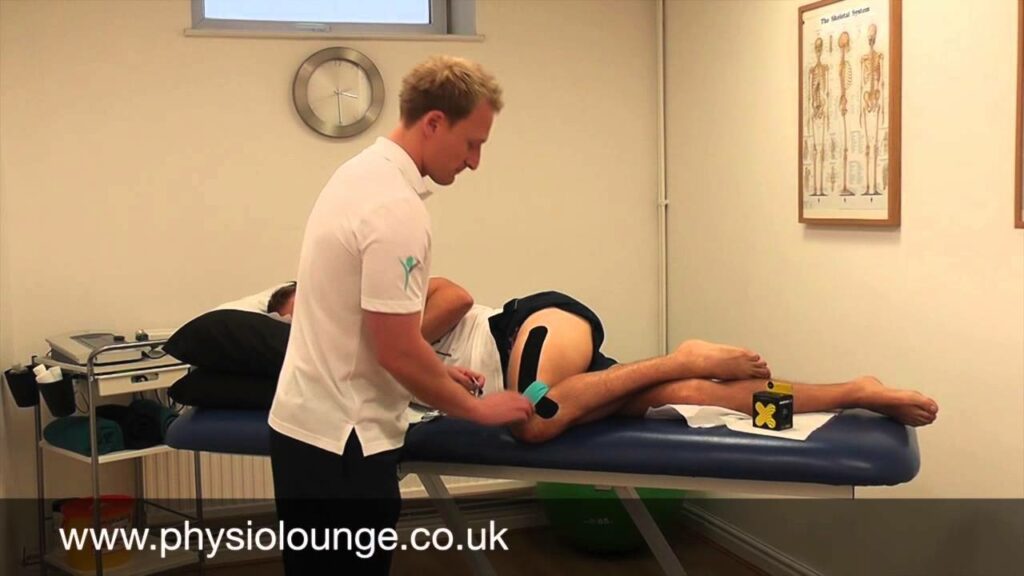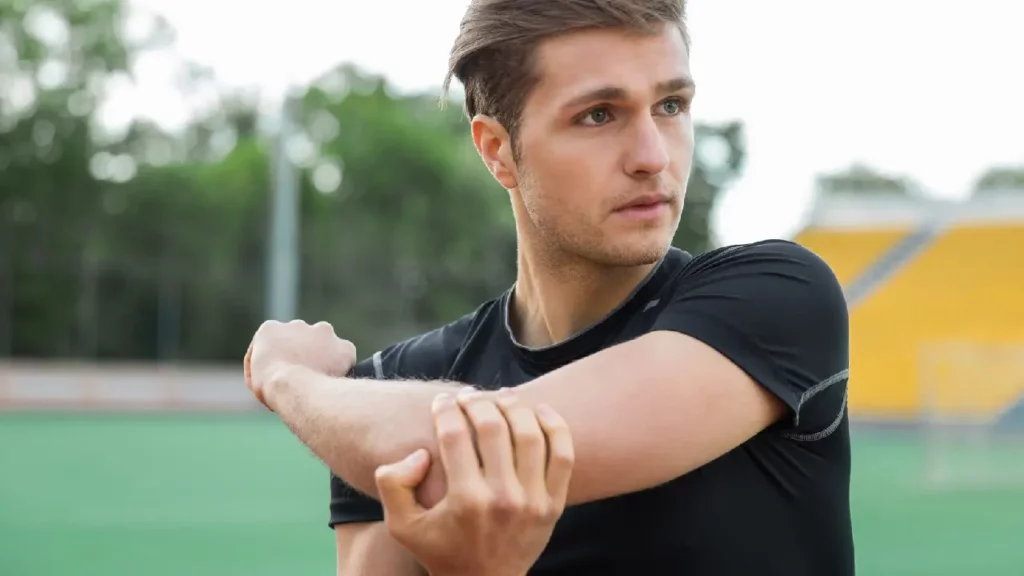“My hip keeps feeling like it’s clicking, clunking, snapping, popping”
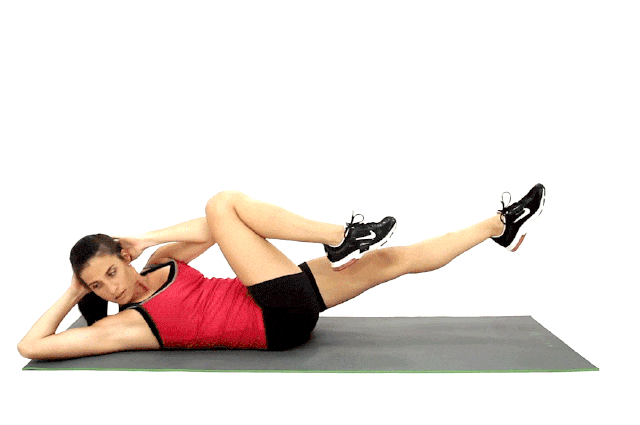
Does this sound familiar? Are you this guy or girl? Are you constantly interrupted while doing your leg raises by this annoying click or clunk in your hip? What’s going on? In this post we’re going to explore some of the reasons behind the dreaded “clunky hip” and give you some strategies on how to tackle it… and how not to.
Clicking – Is it the devil?
Clicking in and of itself isn’t an injury and isn’t a reliable indicator of an injury. Loads of people without pain or problems get clicking. If you’re experiencing this in the hip, it could be tendons rolling out bones like your hip flexor tendons or the iliotibial band. If you’re getting clicking with associated pain you might have cartilage injury in your hip. Remember, as always, get assessed and get a diagnosis.
Why does this happen?
There are multiple reasons you might end up with a clicky / clunky / tight hip, but if we’re talking specifically about why it could be happening during core exercises, here’s why. Bicycles, dead-bugs, leg raises all have one thing in common and that is that they are all “open chain exercises.” This means that the end of the limb (in this case your leg) isn’t in contact with anything as you move it. The problem here is that get lots of activity of the muscles at the front of your hip and potential more femoral head glide in the socket. The ball rather than staying centered in the socket starts to stray forward and potentially pinch.
“If you’re hip is not staying centered in the socket you may experience the following symptoms…”
- Pinching
- Pain
- Clicking / clunking
- Tightness
So, another way of saying that your “ball isn’t staying socket centered” + your getting one or more of the above complaints is: instability. Your hip flexors will often end up feeling “tight” in the presence of hip joint instability. So you should defo stretch them right?
99% of people’s first go to when they feel tight will be to…
STRETCH
But what if your body is deliberately tightening up your hip flexors in an effort to stabilise your hip? If you stretch the hell out of them you undo that stability and your body tightens it back up again. If you’ve been going through this back and forth with no change in your tightness and or clicking, your hip doesn’t need stretching, it needs…
STABILISE
When your body feels happy that the hip is stable and not at risk of injury, it doesn’t need to tighten up your hip flexors. Everything from pain, range of motion and clicking can subsequently improve.
Quick Anatomy Lesson
All joints have both static stabilisers (stuff that supports the joint but doesn’t contract e.g. ligaments) and dynamic stabilisers (stuff that supports the joint by contracting).
Your iliofemoral ligament and your anterior (front) hip joint capsule are two of the primary static stabilisers of your hip joint. Ligaments are structures that attack from bone to bone to limit excessive motion to prevent injury i.e. you don’t want to loosen these.
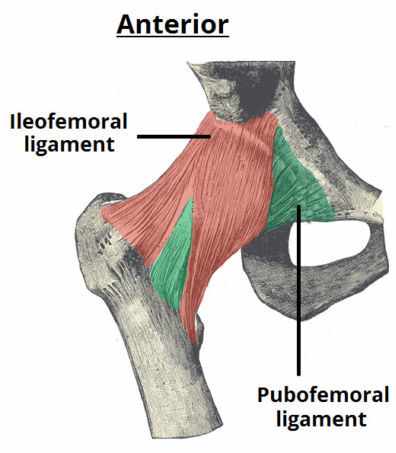
Your psoas and iliacus (together known as iliopsoas) make up some of your hip flexor muscles that cross the front of your hip and act as a dynamic restraint to excessive “ball sliding forwards motion.” These muscles can protectively tighten up if this sliding is happening to try and prevent it.

What can I do about it?
If you have pain at the front of your hip or a diagnosed condition such as a labral tear, iliopsoas bursitis or tendinopathy etc, then performing “open-chain” hip flexor exercises should be avoided due to the reasons stated earlier. However you can tweak exercises to make them more “hip friendly” and work on improving your hip stability.
Modifying Hip Exercises:
This is an example of tweaking a hip exercise to make it more hip friendly. Why are we making this tweak? We get better proprioceptive feedback i.e. the connection between your foot and the ball makes it an easier job for your body to detect your hip joint position. Secondly you get better co-contraction of more muscles around your hip to help centre the ball in the socket vs just your hip flexors running the show.
Tips for performing:
- Start off with small range of motion in that mid-range and aim to master control here before upping the ante.
- Push down gently into the ball as you drag it inwards towards you and push it outwards away from you.
Wrap Up
So that’s it guys! A simple tweak to help you stay in the game if you’ve got hip pain and an alternative strategy to help tackle clicky tight hips. Remember if in doubt, get it checked out and subscribe to us on social media for more tips, tricks and offers from The Physio Lounge. You can also book for online or face to face consultations using our booking portal below.
